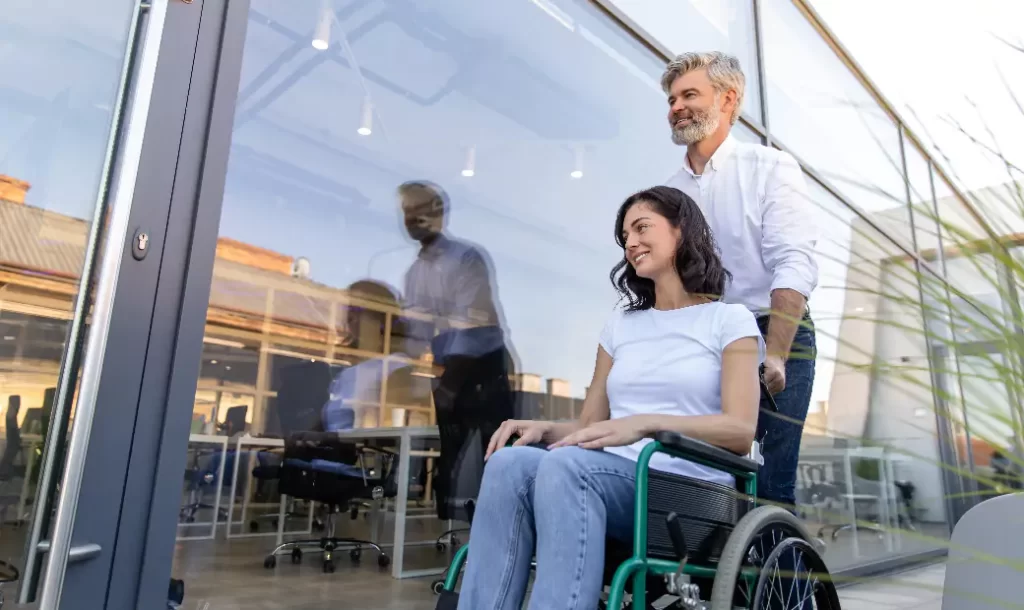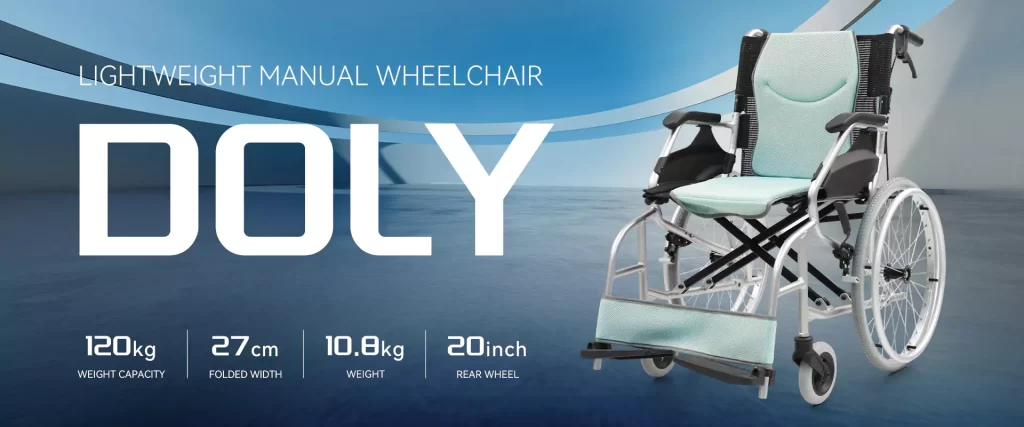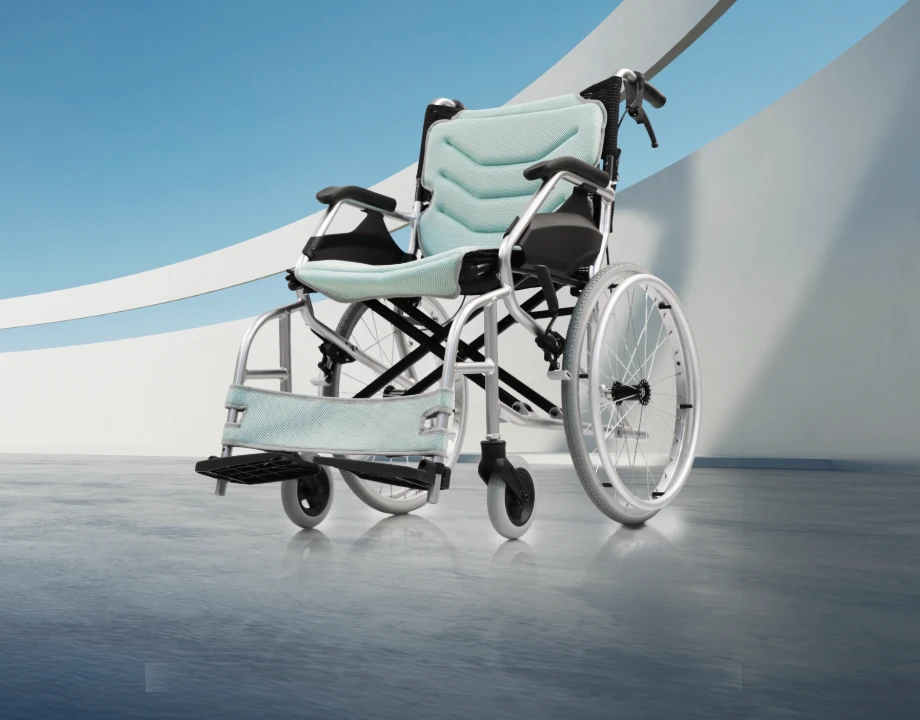Contact Us
Customizable Cushion Systems for Lightweight Wheelchairs Enhance Comfort
Users of lightweight manual wheelchairs face a unique set of demands: minimal wheelchair weight for propulsion efficiency, while still maintaining comfort, stability and pressure-management during prolonged sitting. Research shows that suboptimal seating surfaces can lead to increased risk of pressure injuries, postural fatigue and reduced mobility. For example, a study found that seat cushions significantly influence dynamic stability during reaching tasks in wheelchair users with paraplegia.
What “Customizable Cushion Systems” Actually Mean
Definition and scope
By “customizable cushion systems” we refer to seat cushions and related modules designed for wheelchair seating that can be adapted or configured to meet a wide range of user needs—body weight and size, posture correction, pressure relief, mobility demands, and wheelchair frame constraints.

Key customization parameters
1.Seat width, depth and profile – Adjusting cushion dimensions to match wheelchair seat and user’s pelvis/leg geometry.
2.Material and layering – Using combinations of foam, gel, air-cells, honeycomb structures or hybrid systems to offer desired support and pressure redistribution. For example, New Mobility notes cushions made of foam, gel, air or honeycomb each have trade-offs.
3.Postural contours and stability features – Contoured edges, thigh supports, anti-slide surfaces, and optional lateral supports to maintain posture.
4.Weight and thickness constraints – Particularly important for lightweight wheelchair frames: the cushion must add minimal weight while delivering maximum functional comfort. According to Performance Health: “Heavier cushions offer more comfort but add weight that could affect self-propulsion in a lightweight wheelchair.”
Examples of customization in practice
Table 1 summarises typical customization elements and their functional impact:
|
Customization Feature |
Functional Benefit |
Consideration for Lightweight Wheelchair |
|
Adjustable foam/gel layering |
Tailors support & off-loads high-pressure areas |
Choose high strength/low mass materials |
|
Contoured thigh/pelvis supports |
Improves posture & limits sliding |
Integration needs to not add bulk |
|
Modular air or smart air-cell zones |
Dynamic pressure redistribution |
Air systems may add weight, complexity |
|
Low-profile cover materials |
Breathability, cleaning ease, aesthetic |
Must be lightweight and durable |
Comfort and Pressure Relief: What the Experts Say
Interface pressure management
A key metric in seating comfort and health is interface pressure—the pressure between the user’s body (buttocks, thighs) and the cushion surface. A recent systematic review Wiley Online Library highlighted that cushion properties significantly affect temperature, moisture and pressure redistribution for wheelchair users. Another piece of research introduced a classification method for cushion performance using compliant buttock models, underscoring the technical basis behind cushion design.
Stability and posture control
As noted in the “How to choose the best wheelchair cushion” guide, although air cushions may excel in pressure relief, they may sacrifice stability—especially when users lean or reach. For users mobilising in lightweight wheelchairs, the cushion must strike a balance: enough flexibility for comfort, but sufficient rigidity for stability during movement, transfers and reaching.
Comfort over time and impact on mobility
From the “Cushion comfort” article: many cushions reach end-of-life in less than two years, with foam cushions wearing out faster. When the cushion bottoms out, the user’s support is compromised, increasing the risk of discomfort or injury. A customizable system that allows re-adjustment, refurbishing or replacement modules thus extends comfort over time and supports sustained mobility.
Real-world implications for lightweight wheelchair users
Because lightweight wheelchair users often self-propel, every extra gram matters. A custom cushion system designed to minimise excess weight while providing appropriate pressure relief and posture support helps the user conserve energy, improve independence, and reduce fatigue. When designed well, such cushion systems become a key differentiator in user satisfaction and product performance.
Designing Customizable Cushion Systems for Lightweight Wheelchairs
Material selection and weight optimization
Selecting materials with high strength-to-weight ratios is critical. For example, hybrid materials combining low-density foam with gel or honeycomb sections can deliver pressure relief without the bulk of full gel cushions. As discussed, lightweight cushion design must consider the trade-off between comfort and propulsion efficiency.
Modular and adjustable systems
A modular cushion system may include interchangeable inserts (foam, gel, honeycomb) and adjustable shell contours. This allows clinicians or manufacturers to fine-tune seating surfaces without replacing the entire unit. For manufacturers targeting OEM/ODM wheelchair supply, offering modular customization supports a broad user base.
Integrating with wheelchair frame design
Because the cushion sits atop the wheelchair frame, the frame-cushion interface must be carefully engineered: correct seat width, secure attachment (to prevent slipping), compatibility with transfers, and integration of lateral supports if needed. For lightweight wheelchairs, cushion footprint and thickness must align with frame geometry and user’s centre of mass to maintain balance.
User assessment and customization workflow
A thorough user assessment is crucial—body dimensions, posture, mobility level, risk of pressure injuries, lifestyle (active vs sedentary), and transfers/activities. Use of pressure mapping technologies (as described in the literature) can assist in identifying high-pressure zones. Based on assessment, the manufacturer or supplier can recommend the correct cushion configuration.
Maintenance, durability and lifecycle considerations
Customizable systems should enable maintenance: covers removable for washing, inserts replaceable, and system designed for durability. Since occupant comfort and health are directly tied to cushion integrity (see cushion wear-out concerns above) the design should facilitate periodic inspection or renewal.
Why Customizable Cushion Systems Are a Smart Investment for OEM/ODM Wheelchair Manufacturers
Differentiation in the market
Offering a customizable cushion system alongside a lightweight wheelchair platform provides a strong value-add and differentiator. Many wheelchair users expect seat cushions tailored to their needs rather than generic mass-market models.

Meeting regulatory and clinical requirements
Given the emphasis on pressure management and tissue integrity in the literature, cushions must meet increasingly stringent performance expectations. The study by Sprigle et al. emphasises the need for classification and performance evaluation of cushions. For an OEM/ODM manufacturer, providing a high-performance cushion system aligns with clinical needs and may facilitate reimbursement or clinician acceptance.
Scalability and user satisfaction
Customizable modules allow manufacturers to service a wide range of users (from active manual wheelchair users to long-duration seated users) via a flexible system rather than entirely different cushion models. This improves manufacturing efficiency, inventory management and after-sales service.
Partnering for success
As a specialist in seating and cushion systems, you may partner with a manufacturer that understands the materials, biomechanics and user needs. For example, INTCO Medical offers OEM/ODM capabilities in the health-care product domain, and providing customizable cushion systems complements mobility device innovation.
Conclusion
In the competitive field of mobility devices, the value of incorporating high-quality, customizable cushion systems into lightweight wheelchair platforms cannot be overstated. Such systems enhance comfort, support posture, provide pressure relief and extend mobility—while preserving the lightweight, maneuverable qualities users expect. Grounded in research on pressure redistribution and seating biomechanics, the design of these cushions must thoughtfully balance stability, adjustability, weight and durability.
For manufacturers and suppliers, leveraging a specialist partner such as INTCO Medical enables you to bring differentiated, high-performance seating solutions to market with OEM/ODM flexibility.As one of the largest wheelchair manufacturers, INTCO Medical continues to advance seating innovation with customizable cushion solutions that integrate seamlessly into OEM/ODM lightweight wheelchair designs.
If you’re focused on offering next-generation wheelchair solutions that prioritise user comfort, health and mobility, ask us how our customizable cushion systems—developed in collaboration with INTCO Medical—can help you deliver it.



